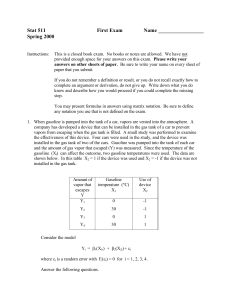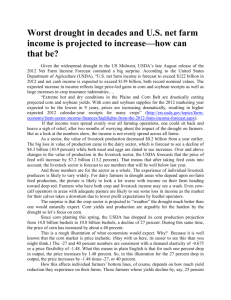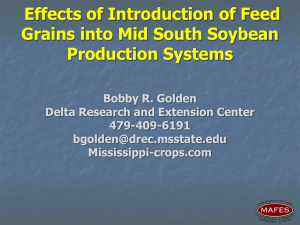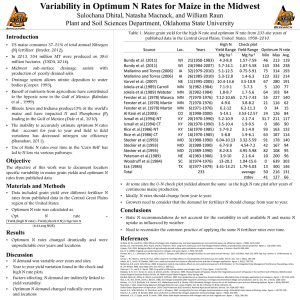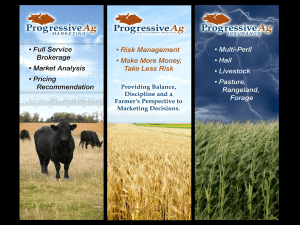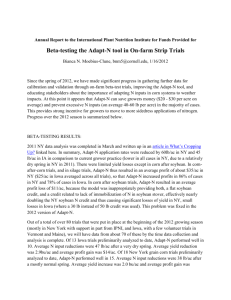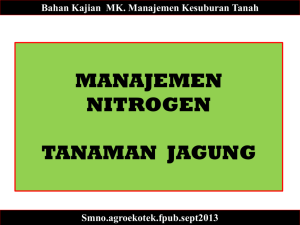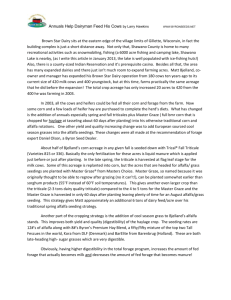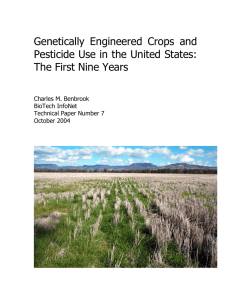Questions regarding (6.1.1) Science in agriculture Regarding
advertisement
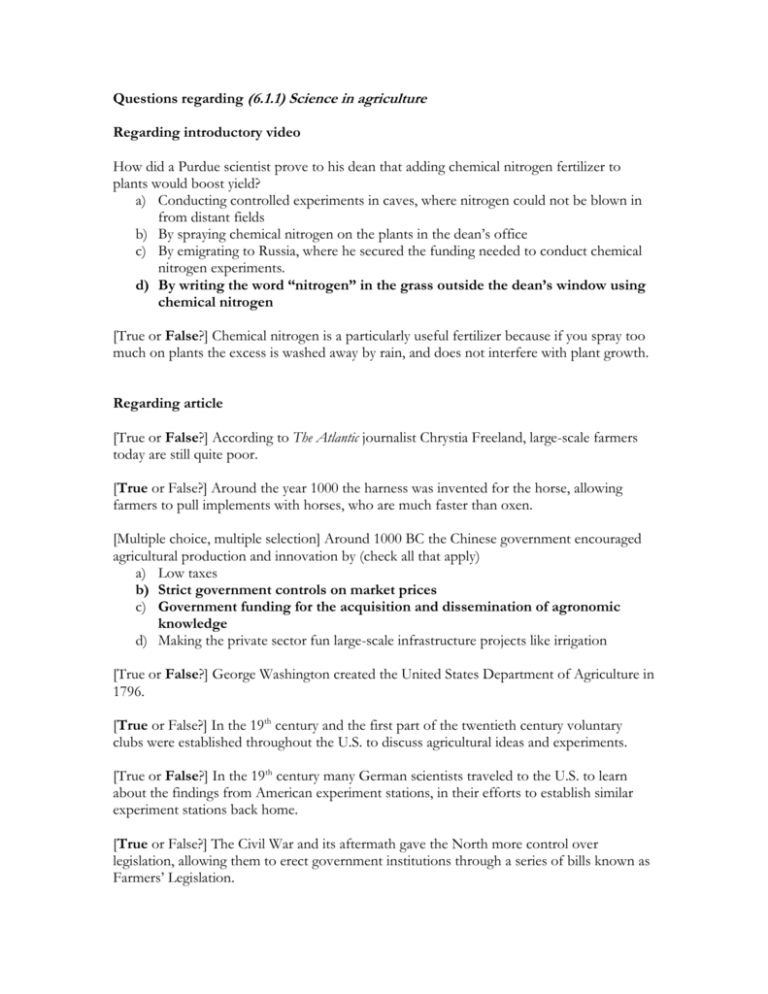
Questions regarding (6.1.1) Science in agriculture Regarding introductory video How did a Purdue scientist prove to his dean that adding chemical nitrogen fertilizer to plants would boost yield? a) Conducting controlled experiments in caves, where nitrogen could not be blown in from distant fields b) By spraying chemical nitrogen on the plants in the dean’s office c) By emigrating to Russia, where he secured the funding needed to conduct chemical nitrogen experiments. d) By writing the word “nitrogen” in the grass outside the dean’s window using chemical nitrogen [True or False?] Chemical nitrogen is a particularly useful fertilizer because if you spray too much on plants the excess is washed away by rain, and does not interfere with plant growth. Regarding article [True or False?] According to The Atlantic journalist Chrystia Freeland, large-scale farmers today are still quite poor. [True or False?] Around the year 1000 the harness was invented for the horse, allowing farmers to pull implements with horses, who are much faster than oxen. [Multiple choice, multiple selection] Around 1000 BC the Chinese government encouraged agricultural production and innovation by (check all that apply) a) Low taxes b) Strict government controls on market prices c) Government funding for the acquisition and dissemination of agronomic knowledge d) Making the private sector fun large-scale infrastructure projects like irrigation [True or False?] George Washington created the United States Department of Agriculture in 1796. [True or False?] In the 19th century and the first part of the twentieth century voluntary clubs were established throughout the U.S. to discuss agricultural ideas and experiments. [True or False?] In the 19th century many German scientists traveled to the U.S. to learn about the findings from American experiment stations, in their efforts to establish similar experiment stations back home. [True or False?] The Civil War and its aftermath gave the North more control over legislation, allowing them to erect government institutions through a series of bills known as Farmers’ Legislation. [True or False?] The “extension service” aims to educate the public on what is discovered on the experimental farms called “experiment stations”. [True or False?] Land Grant universities are charged with research, teaching, and extension. [True or False?] Although experiment stations are useful for testing new varieties of crops, West Virginia once proved that it was equally effective to give new seed varieties to farmers and have them report the results. Why didn’t egg farms a century ago keep layers in cages throughout their lives, as they do today? a) Farmers could not provide all the hens’ nutrient needs. b) The breed of bird was different and would die in captivity. c) Potential predators were less prevalent. d) All of the above [True or False?] With the advent of experiment stations can the newly discovered method of raising chickens for meat in dark, confined spaces. In the 1930s one layer could lay 153 eggs a year, while today the produce about a) 250 b) 300 c) 350 d) 400 e) 450 [True or False?] In seventeenth century Prussia, we learned that one can produce taller humans quickly by forcing tall people to mate. This lesson was later used in corn production. [True or False?] High yielding corn varieties are best produced by breeding plants of different varieties. In 1913, ____ of farmers in a national survey indicated that experience alone was valuable in farming well, implying scientific experiments on experiment stations was of little value. a) Only 3% b) 29% c) 38% d) 44% e) 66% f) more than 80% What is this a graph of? (See pic below) a) soybean yield and soybean acres planted in soybeans (in U.S.) b) total soybean production and acres planted in soybeans (in U.S.) c) soybean yield and total soybean production (in U.S.) d) corn yield and acres planted in corn (in U.S.) e) total corn production and acres planted in corn (in U.S.) f) corn yield and total corn production (in U.S.) s [True or False?] Today, different breeds of chickens are used for meat and egg production. [True or False?] Chicken meat used to be more expensive than beef. What is this a graph of (see pic below)? a) Pounds of feed needed to produce a dozen eggs b) Pounds of feed needed to produce a lb of live broiler c) Price of chicken divided by the price of beef d) Price of whole chicken breasts The corporation Monsanto developed varieties of plants with genes that allowed the plants to be resistant to the pesticide glyphosate. Where did those new genes come from? a) From a bacterium b) From a different part of the plant’s DNA c) From a fungi d) From a closely related plant [True or False?] While most cotton in the U.S. is herbicide tolerant through genetic modification, only a few acres of cotton is genetically modified to make its own insecticide. Why do feedlots now decide to locate themselves in places like western Oklahoma and the Panhandle of Texas? a) To be closer to corn production, the main ingredient of cattle feed b) Because the climate is favorable to cattle health c) To be closer to the main consumers of beef [True or False?] While decades ago agricultural scientists largely focused on making food cheaper, today they also focus on providing public goods like preventing soil erosion.




